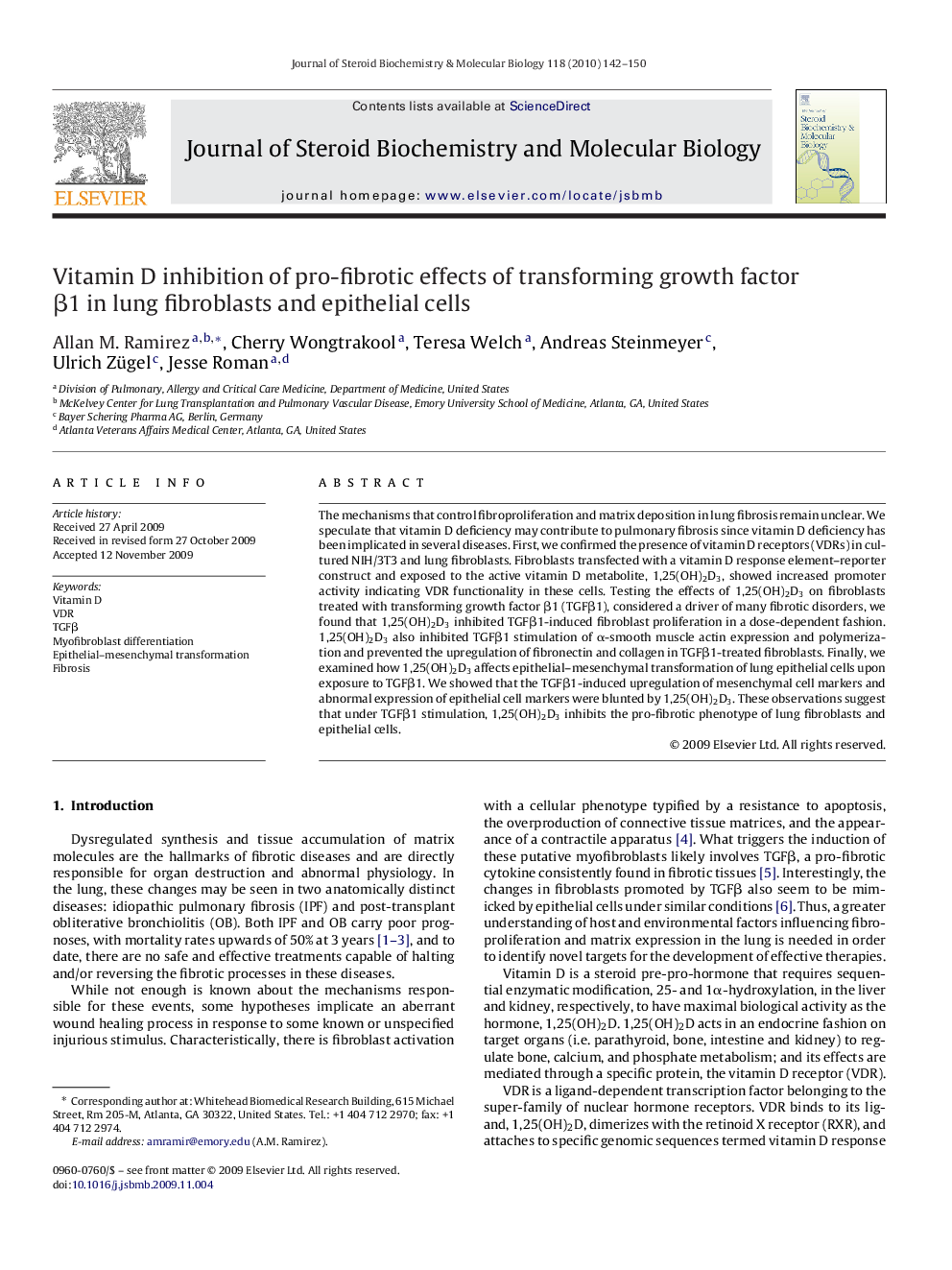| Article ID | Journal | Published Year | Pages | File Type |
|---|---|---|---|---|
| 1992217 | The Journal of Steroid Biochemistry and Molecular Biology | 2010 | 9 Pages |
Abstract
The mechanisms that control fibroproliferation and matrix deposition in lung fibrosis remain unclear. We speculate that vitamin D deficiency may contribute to pulmonary fibrosis since vitamin D deficiency has been implicated in several diseases. First, we confirmed the presence of vitamin D receptors (VDRs) in cultured NIH/3T3 and lung fibroblasts. Fibroblasts transfected with a vitamin D response element-reporter construct and exposed to the active vitamin D metabolite, 1,25(OH)2D3, showed increased promoter activity indicating VDR functionality in these cells. Testing the effects of 1,25(OH)2D3 on fibroblasts treated with transforming growth factor β1 (TGFβ1), considered a driver of many fibrotic disorders, we found that 1,25(OH)2D3 inhibited TGFβ1-induced fibroblast proliferation in a dose-dependent fashion. 1,25(OH)2D3 also inhibited TGFβ1 stimulation of α-smooth muscle actin expression and polymerization and prevented the upregulation of fibronectin and collagen in TGFβ1-treated fibroblasts. Finally, we examined how 1,25(OH)2D3 affects epithelial-mesenchymal transformation of lung epithelial cells upon exposure to TGFβ1. We showed that the TGFβ1-induced upregulation of mesenchymal cell markers and abnormal expression of epithelial cell markers were blunted by 1,25(OH)2D3. These observations suggest that under TGFβ1 stimulation, 1,25(OH)2D3 inhibits the pro-fibrotic phenotype of lung fibroblasts and epithelial cells.
Related Topics
Life Sciences
Biochemistry, Genetics and Molecular Biology
Biochemistry
Authors
Allan M. Ramirez, Cherry Wongtrakool, Teresa Welch, Andreas Steinmeyer, Ulrich Zügel, Jesse Roman,
